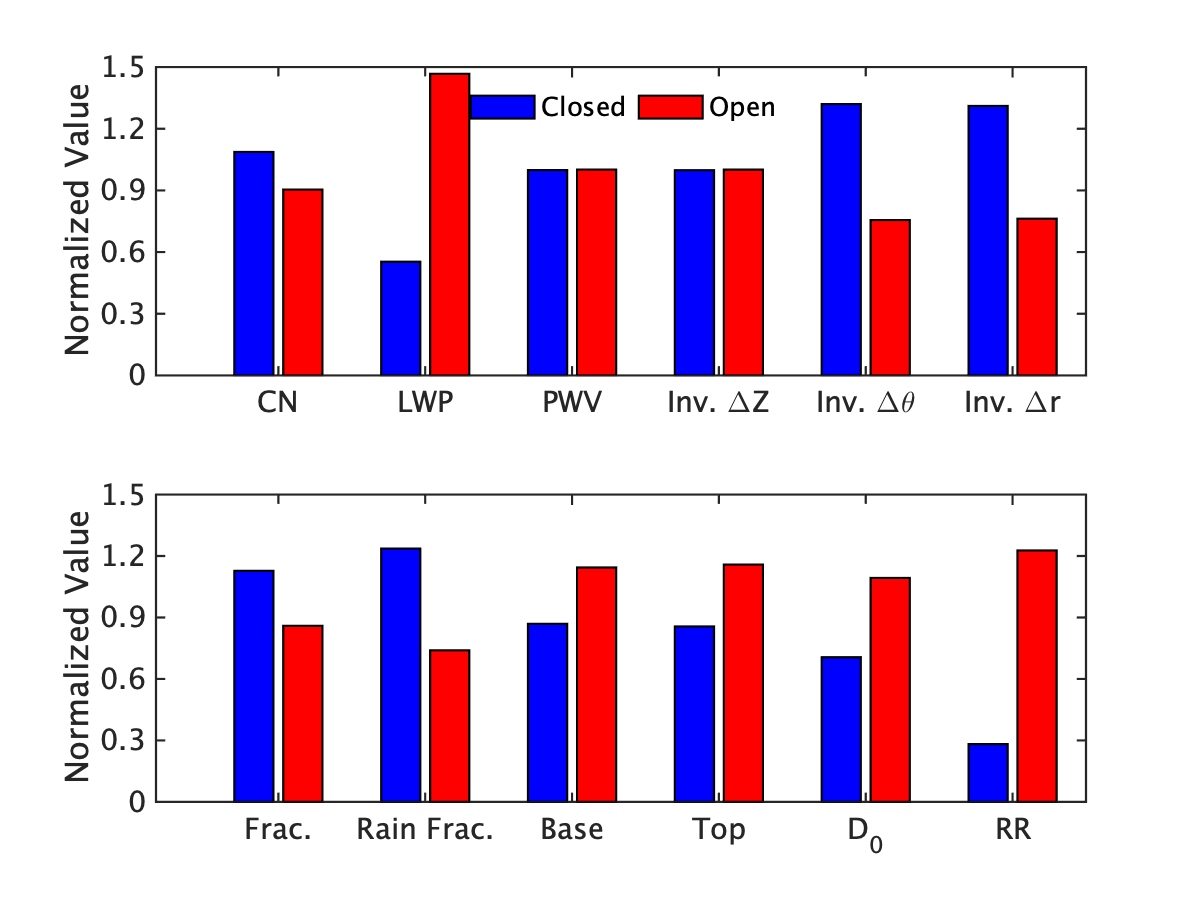Cellular organization in marine boundary-layer clouds
Submitter
Jensen, Michael — Brookhaven National Laboratory
Area of research
Cloud Distributions/Characterizations
Journal Reference
Science
Marine boundary-layer clouds regularly exhibit two distinct organizations at horizontal scales ranging from 20 to 200 km, termed open and closed cells. The way these clouds organize significantly determines the cloud coverage, and thereby their radiative effects. We use long-term data collected at the Eastern North Atlantic ARM site in the Azores Islands to characterize the cloud, precipitation, aerosol, thermodynamic, and large-scale meteorological fields associated with the open and closed cellular marine boundary-layer clouds.
Impact
We quantify important distinctions between the cloud, precipitation, aerosol, and meteorological fields during periods of open- and closed-cellular marine boundary-layer clouds. The results—which are first of their kind for this region—provide insights into the environmental and cloud properties that drive different marine boundary-layer cloud organization states, thereby providing guidance on the evaluation and improvement of the simulation of these cloud systems.
Summary
Long-term ARM observations (more than 500 hours) from the ARM Eastern North Atlantic site are combined with reanalysis output and satellite observations to identify occurrences of marine boundary-layer clouds organized in open- and closed-cellular structure. The identified time periods are used to compare and contrast the composite characteristics of the cloud, precipitation, aerosol, thermodynamic, and large-scale meteorological properties between the two organizational states. The results indicate that open-cellular cases occur under stronger cold-air advection and large-scale subsidence compared to the closed-cellular cases. In addition, the open-cellular cases are associated with deeper boundary layers, stronger low-level winds, and higher rain rates. This is the first time the different characteristics among organizational states have been quantified from long-term surface-based observations. The results provide important targets and constraints for simulation of Eastern North Atlantic boundary-layer clouds.


